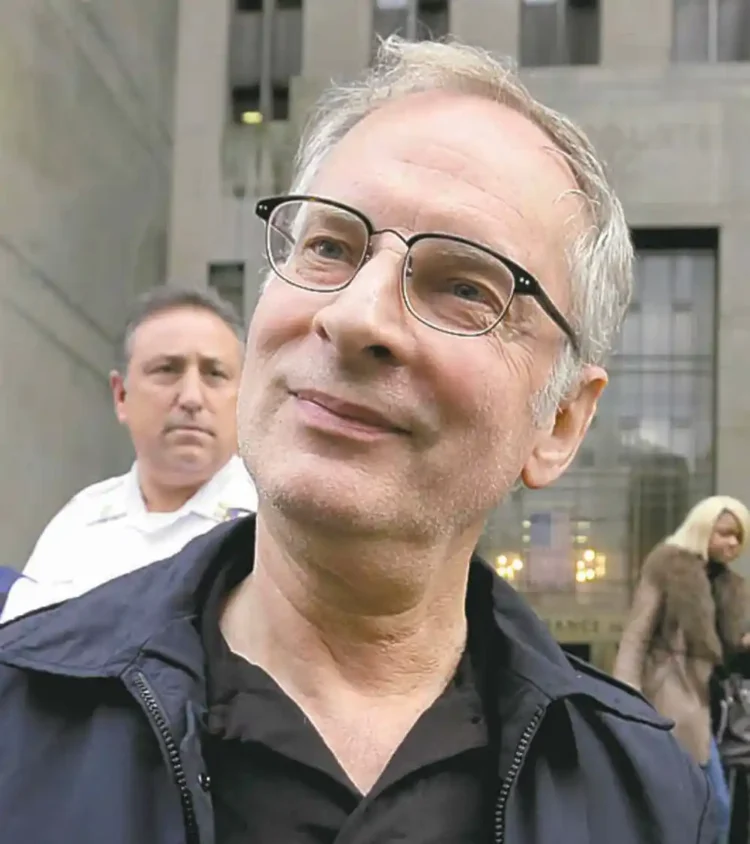Early Life and Background

Bernhard Hugo Goetz was born on November 7, 1947, in Queens, New York, and grew up in a relatively affluent environment. His father was a businessman, and his family owned a 300-acre dairy farm in Upstate New York. Goetz’s upbringing was marked by a strict and sometimes difficult relationship with his father, shaping aspects of his personality and worldview. Goetz attended high school in New York City and later studied electrical and nuclear engineering at New York University, graduating in 1969.
During the 1970s, he established himself in Manhattan as an electronics engineer, owning a small business that repaired electronics. Though successful, he lived a relatively solitary life, often feeling threatened by the rising crime in New York City. Goetz had personally experienced the city’s crime problem; in 1981, he was assaulted by three youths in a mugging incident that left him with lasting physical injuries. Afterward, he applied for a permit to carry a firearm for protection, but his request was denied, which likely contributed to his decision to carry an unlicensed firearm.
Table of Contents
ToggleThe Subway Incident
On December 22, 1984, Goetz boarded a subway car on the 2 train in Manhattan. At around 1:30 p.m., Goetz was approached by four Black teenagers: Troy Canty, Darrell Cabey, James Ramseur, and Barry Allen. The young men, aged between 18 and 19, had a record of petty theft and other crimes. They asked Goetz for five dollars, though later accounts suggest that Goetz interpreted their approach as an attempted mugging.
Fearing for his safety and perceiving a threat, Goetz responded by pulling out his unlicensed .38 caliber revolver and firing multiple shots at the four teenagers. He fired five shots in total, hitting each of the young men. After the shooting, Goetz fled the scene, leaving the subway station and eventually disappearing from New York City. He remained on the run for nine days before turning himself in to police in Concord, New Hampshire.
The details surrounding Goetz’s actions—both during the shooting and in his confession—added layers of complexity to the case. In his confession to police, Goetz explained his thought process during the incident and stated that his decision to fire was driven by fear and anger, particularly anger toward the broader problem of urban crime.
Legal Proceedings and Trial
The trial of Bernhard Goetz drew massive media coverage and polarized the American public. Supporters of Goetz saw him as a hero who took action in the face of rampant urban crime, while opponents viewed him as a dangerous vigilante who had overstepped legal and moral boundaries.
Initially, Goetz was charged with attempted murder, assault, reckless endangerment, and criminal possession of a weapon. However, his legal team argued that Goetz had acted in self-defense, claiming that he believed he was in imminent danger of harm. The trial centered on whether Goetz’s fear was reasonable and whether his response was justified given the circumstances.
In 1987, after a high-profile trial, Goetz was acquitted of the more serious charges of attempted murder and assault, but he was convicted of the lesser charge of criminal possession of a weapon. He was sentenced to one year in jail but served just eight months due to good behavior. The trial verdict highlighted the complexities of self-defense laws and raised questions about how far individuals can go to protect themselves in dangerous situations.
Public Reaction and Media Coverage
The case of Bernhard Goetz touched a raw nerve in American society and became a symbol of the frustrations and fears of the time. New York City, in the 1980s, was experiencing a peak in crime rates, and residents were increasingly wary of violent crime on the city’s streets and subways. Many New Yorkers, tired of the lack of safety and police protection, saw Goetz as a symbol of taking control in a lawless environment.
The media’s portrayal of Goetz was mixed; some outlets depicted him as a heroic figure who stood up against crime, while others portrayed him as a vigilante with racial motivations. Goetz’s case brought racial tensions to the forefront, with some critics accusing him of being motivated by racial bias. His choice to flee after the incident, as well as his public statements during the trial, further fueled this perception and raised concerns about vigilantism as a response to crime.
The incident also highlighted the city’s struggles with law enforcement and the public’s frustration over the lack of security on the subway system, which was notorious for muggings, robberies, and violence. Goetz’s actions forced the city to confront the fear and mistrust that many New Yorkers felt toward both criminals and the police.
Self-Defense Laws and Legal Implications
The legal principles of self-defense played a central role in the Goetz trial, particularly the concept of “reasonable fear.” The jury had to decide whether Goetz’s perception of an imminent threat was reasonable under the circumstances, and their decision ultimately led to his acquittal on attempted murder charges. This case underscored the importance of clear self-defense laws and fueled debate over how the legal system should balance the rights of individuals to protect themselves with broader concerns about public safety and vigilantism.
The Goetz case prompted questions about where to draw the line between self-defense and excessive force, especially in a high-crime setting. It also raised issues related to gun control, as Goetz’s possession of an unlicensed firearm became a key aspect of his legal troubles. In the years that followed, there were renewed calls for more comprehensive gun control measures and better-defined self-defense laws, leading some states to review and adjust their statutes.
Long-Term Impact on Crime Policy
The Goetz case had a lasting impact on public attitudes toward crime and influenced crime policy in New York City and beyond. In the aftermath of the incident, New York took steps to reduce crime in the subway system, including increasing police presence, improving surveillance, and implementing tougher penalties for subway-related offenses. These efforts were part of a broader crackdown on crime, which ultimately led to a significant decline in crime rates throughout the 1990s.
Goetz’s actions and the public reaction to his trial also contributed to the “tough on crime” policies of the 1980s and 1990s, a period marked by increased incarceration rates and more aggressive law enforcement tactics. Politicians and policymakers responded to the public’s fear of crime by implementing policies that prioritized law and order, including harsher sentencing laws, the expansion of police forces, and the construction of more prisons. While these policies succeeded in reducing crime rates, they also had long-term social and economic consequences, particularly in low-income and minority communities.
Bernhard Goetz in Later Years
After serving his sentence, Bernhard Goetz faded from the public spotlight but continued to live in New York City. Over the years, he has made sporadic public appearances and has occasionally spoken about his experience. He became an advocate for animal rights and vegetarianism and launched a campaign to promote better treatment of animals. In interviews, Goetz has reflected on his actions and the legacy of the subway incident, often emphasizing his belief in self-defense while acknowledging the complexity of his case.
Goetz’s life after the trial reflects his desire to distance himself from the image of the “Subway Vigilante.” He has expressed regret about some of his public comments during the trial, particularly those that were interpreted as racially insensitive, and has sought to redefine his legacy on his own terms.
Social and Cultural Legacy
The story of Bernhard Goetz remains a touchstone in discussions about urban crime, self-defense, and race in America. The incident and its aftermath have been referenced in films, books, and television shows, often as an example of the difficult choices individuals may face in high-crime settings. Goetz’s actions have been compared to those of other vigilante figures, both real and fictional, and his case continues to be cited in debates over the boundaries of self-defense and the role of private citizens in combating crime.
In many ways, Goetz’s story reflects the broader cultural anxieties of the 1980s, when cities like New York were struggling with high crime rates, economic challenges, and racial tensions. His case highlighted the limitations of the justice system, the consequences of inadequate public safety, and the deep-seated fears that drove some individuals to take matters into their own hands. Today, the story of Bernhard Goetz serves as a reminder of the complexities of crime, justice, and individual responsibility in a society that continues to grapple with issues of public safety and personal freedom.
Conclusion
The case of Bernhard Goetz is a profound and complicated chapter in American legal history that raises important questions about self-defense, vigilantism, and the role of citizens in protecting themselves. Goetz’s story remains relevant today, as debates over crime, gun control, and self-defense continue to shape public policy and societal norms. The “Subway Vigilante” incident serves as both a cautionary tale and a case study in the challenges of balancing individual rights with the need for public safety in a complex, often unpredictable world.
